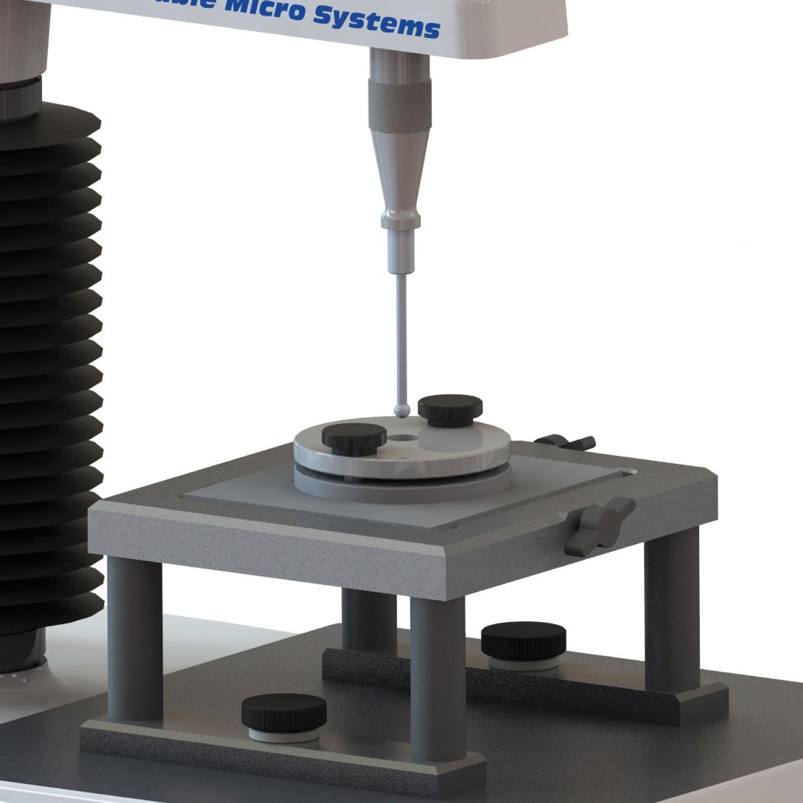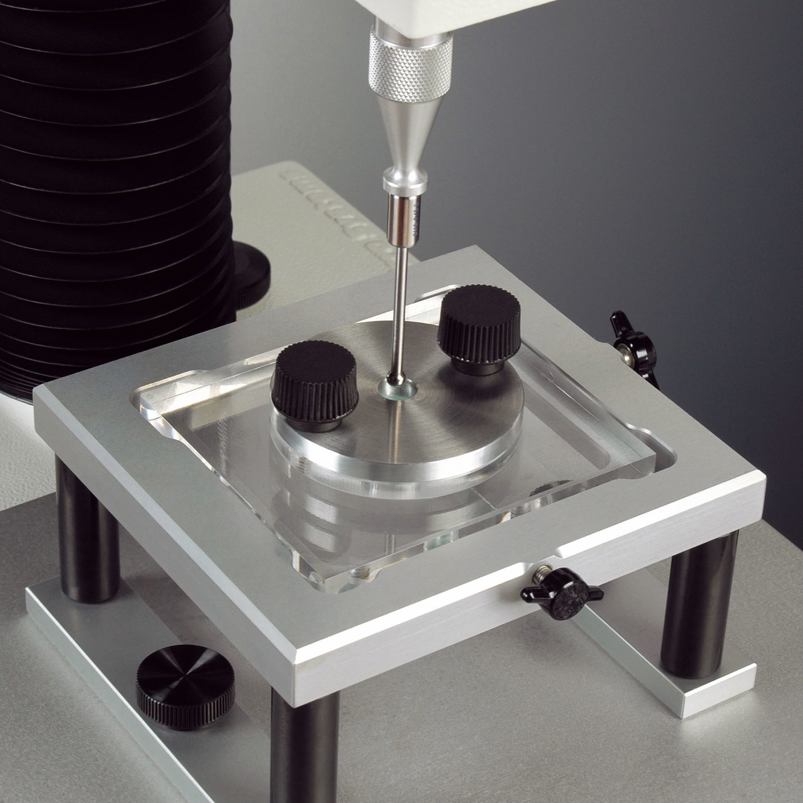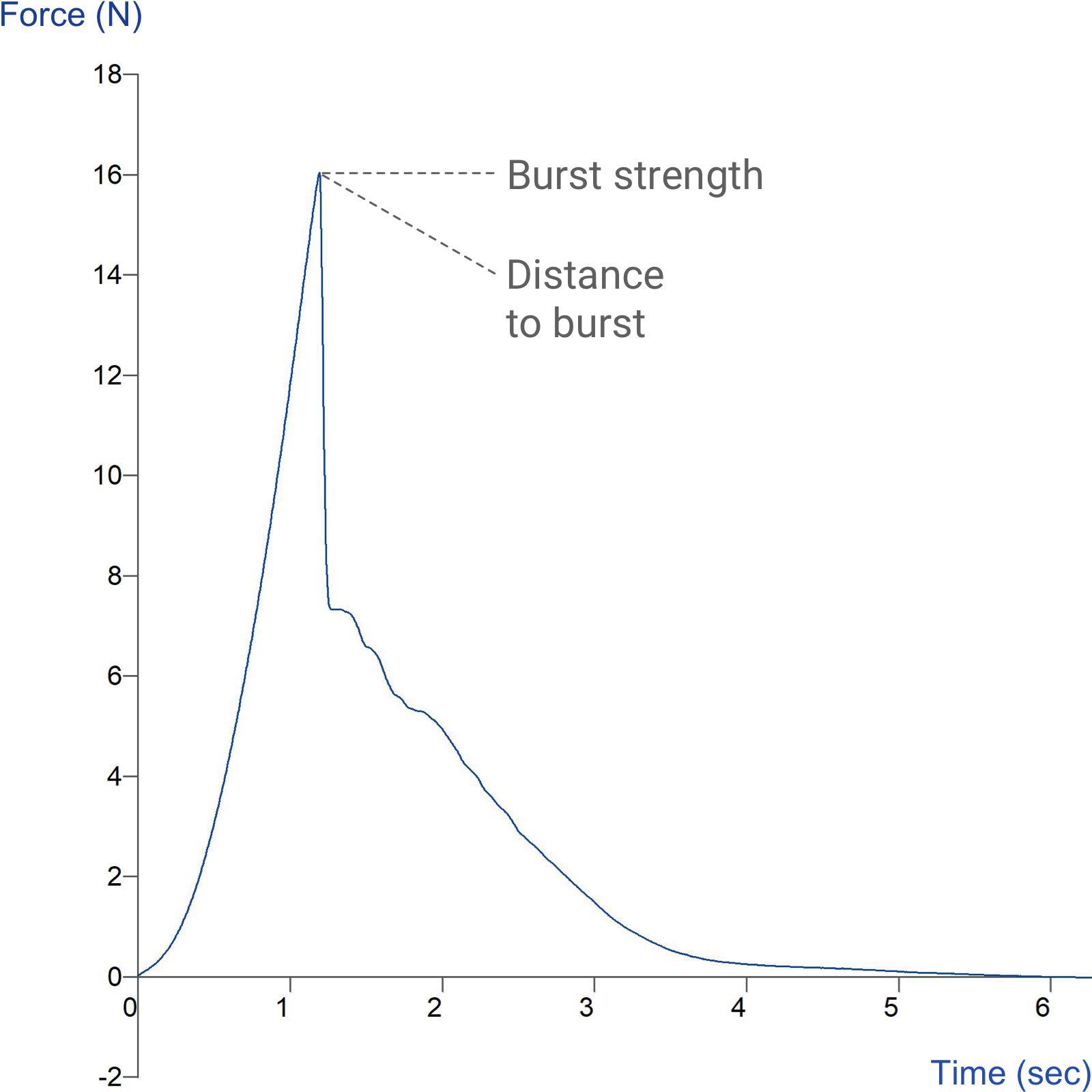Product overview
The Film Support Rig allows the measurement of the biaxial extensional properties of films and thin sheeted materials. Prior to performing the test, the sample is placed over a hole in a raised perspex platform. A top plate prevents the sample from slipping during testing. The test is then carried out as the arm of the Texture Analyser brings a 5mm stainless steel ball probe down into the aperture. The maximum force to rupture the film is recorded and is referred to as the burst strength of the strip.
The resilience and relaxation properties of the film can also be measured. Resilience can be assessed by depressing the film surface to a chosen distance before retracting the ball probe. The property is calculated using a ratio of the work of compression and work of withdrawal. Similarly, relaxation can be measured with the addition of a hold period within the test to allow the product's recovery to be evaluated. Both these properties broaden the application of the Film Support Rig. Burst strength, resilience and relaxation are important factors in determining the mechanical properties of the product, allowing manufacturers to optimise product structure and formulation.
Examples of the application of the Film Support Rig in the food industry include:
Breath freshening strips, leaf gelatine, nori (seaweed sheets for sushi), rice paper, packaging (shrink wrapping, plastic film packaging), confectionery wrappers (or any laminated individual product wrapping), wafer thin meats and cheeses, baking parchment, bakery casings.
Additional examples of the application of the Film Support Rig in the pharmaceutical and other non-food industries include:
Self-adhesive bandages, controlled release polymer film, packaging films, micro pore tape, gel cushion pads (e.g. corn pads), synthetic skin, latex film, polymer films, protective films, laminated products, foils, adhesive tapes of all types, silicone paper.
How does the Film Support Rig work?
Ideal sample form
A thin or film-like material which can be successfully mounted without failure or major deformation over an aperture.
Benefits and limitations
- Two sample support options are offered depending upon sample flexibility.
Technical information
Installation
Full installation instructions are provided within the Education Zone of the latest Exponent/Connect software version and on the technical information sheet accompanying this product.
Chemical compatibility
Stable Micro Systems probes and attachments are commonly made from four materials: anodised aluminium (AA6082 T6), stainless steel (316 T), Delrin (acetyl copolymer) and Perspex (polycarbonate).
In general use, probes and attachments made from these materials will be suitable for testing food products and inert non-food materials.
The four materials listed above are not universally resistant to all types of chemicals and as such the compatibility of the probe/attachment material with the product (to be tested) must be established to prevent damage to the probes and attachments. If the compatibility of the product with the probe is unknown to the customer then the chemical information about the product (Material Safety Data Sheet or Product Data Sheet) should be submitted to Stable Micro Systems. Stable Micro Systems will then assess the suitability of the probe/attachment material for use with the product and advise accordingly. If this advice is not sought then Stable Micro Systems will not accept liability for probes/attachments damaged by chemical attack from the product being tested.
Cleaning and maintenance
All probes and attachments may be cleaned in warm (or hand hot) water using a mild detergent. A soft brush may be used but abrasive cleaning aids should be avoided. Stable Micro Systems products should not be microwaved or cleaned in a dishwasher.
Screw threads should be lightly lubricated after drying using a light lubricant, e.g. petroleum jelly, mineral oil. This will aid the fitting and unscrewing of the item. Each component of a probe or attachment should be wrapped separately when stored, to avoid scratching or chipping. This will safeguard against any unnecessary damage to the accessory.



